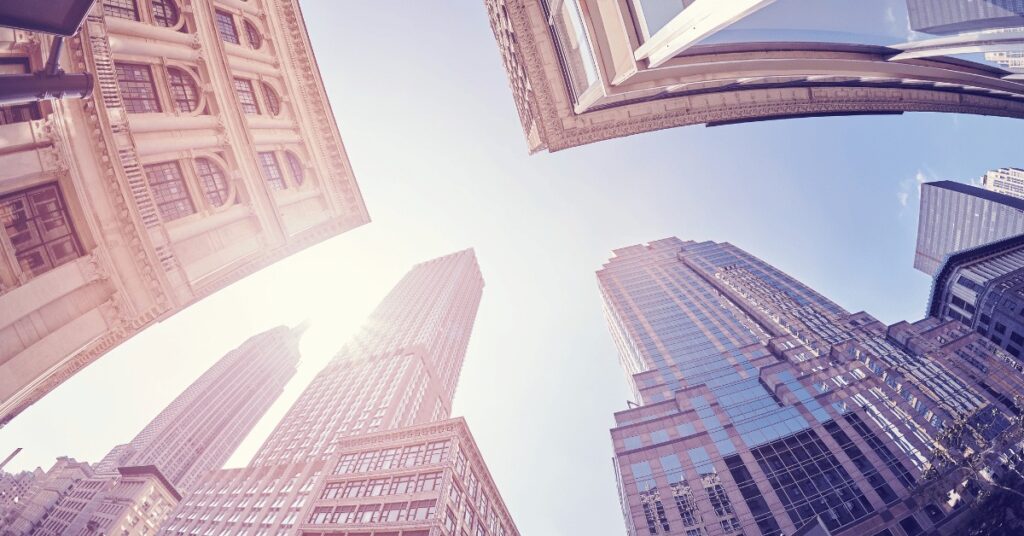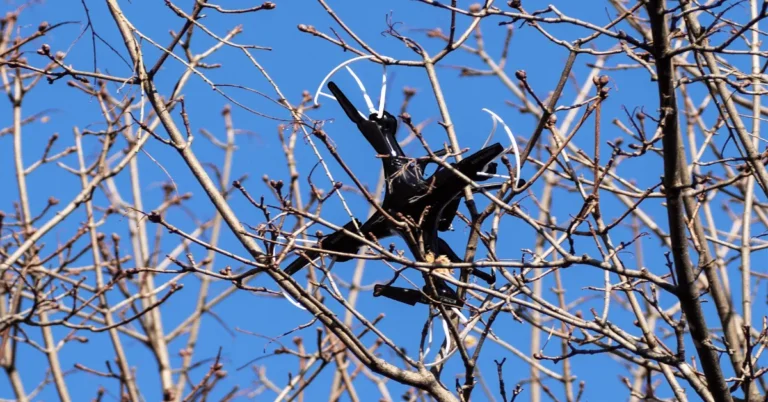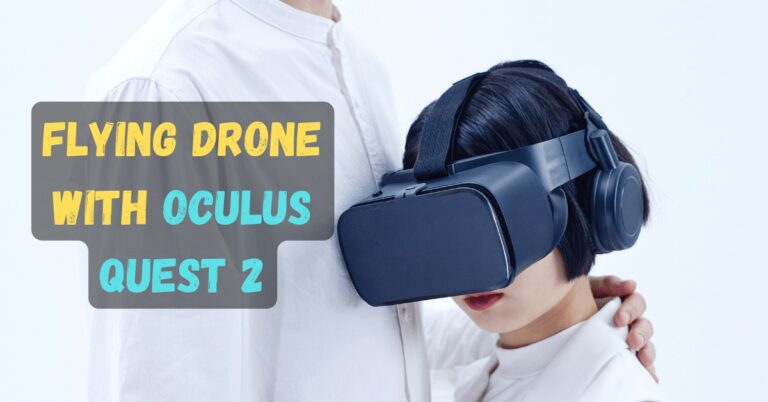How to Get Rid of Fisheye From Drone Photos?

Are you tired of capturing breathtaking aerial views with your drone only to find that the fisheye effect distorts them? Don’t worry, and you’re not alone. Fisheye is a common issue in drone photography that can make your photos look warped and unprofessional.
But the good news is that you don’t have to settle for mediocre images. With the right tools and techniques, you can easily remove fisheye and enhance the quality of your drone photos.
In this article, we’ll show you How to Get Rid of Fisheye From Drone Photos. We’ll explain what fisheye is, why it happens, how to identify it in your photos, and whether or not you can prevent it.
We’ll also provide step-by-step instructions for fixing fisheye using popular software such as Adobe Photoshop, Lightroom, and Premiere Pro.
Plus, we’ll share tips and tricks for shooting drone photos without fisheye in the first place. By the end of this article, you’ll have all the knowledge you need to take your drone photography to the next level.
What Is Fisheye and Why Does It Happen in Drone Photos?
If you’ve ever taken drone photos, you may have noticed a distortion in the image that makes it look curved or fishbowl-like. This phenomenon is known as fisheye, and it occurs when light entering the camera lens refracts differently near the edges than in the center.
It can result in a distorted image that may not accurately represent your captured scene.
Let’s dive into the details of fisheye and why it happens in drone photos.
What is Fisheye?
Fisheye is a lens distortion that causes straight lines to appear curved or bent. It can create a circular or hemispherical effect in the image, making it look like the viewer is looking through a fishbowl.
Why Does Fisheye Happen in Drone Photos?
Fisheye is not exclusive to drone photography; it can happen with any camera with a wide-angle lens. However, a fisheye is more common in drone photos because drones typically use wide-angle lenses to capture a wider field of view.

It means that more light enters the lens, and the angle of the lens is more prone to distortion. Additionally, the drone’s camera’s curvature can contribute to fisheye.
How to Identify Fisheye in Your Drone Photos?
Identifying fisheye in your drone photos can be tricky, especially if you need help figuring out what to look for. But don’t worry, and it’s not as difficult as it may seem. This section will show you how to spot fisheye in your drone photos quickly.
Check the Horizon Line
One of the easiest ways to identify fisheye in your drone photos is to check the horizon line. If the horizon appears curved or bent, it’s a clear sign of fisheye distortion.
Remember that some curvature is normal, especially when capturing wide-angle shots. However, excessive curvature can indicate fisheye distortion.
Look for Distorted Objects
Another way to identify fisheye in your drone photos is to look for distorted objects. Fisheye distortion can cause straight lines to appear curved and things to appear stretched or squished. Fisheye distortion is likely to present if you notice malformed objects in your photos.
READ MORE: How to connect AR drone 2.0?
Compare to Reference Photos
If you still need to determine whether your drone photos have fisheye distortion, you can compare them to reference pictures. Reference photos were taken with the same camera and lens settings but without fisheye distortion.

By comparing your photos to reference photos, you can easily spot any fisheye distortion and make the necessary adjustments.
Use Fisheye Correction Tools
Lastly, you can use fisheye correction tools to identify fisheye in your drone photos. Some photo editings software, such as Lightroom and Photoshop, have built-in fisheye correction tools that automatically detect and correct fisheye distortion in your images.
Can You Prevent Fisheye in Drone Photography?
Simple Answer: While fisheye can be a frustrating issue in drone photography, it’s only sometimes possible to prevent it entirely. However, you can use a few tips and tricks to minimize the fisheye effect in your photos.
Use a Lens Filter
Using a lens filter is one way to reduce fisheye in your drone photos. A polarizing or neutral density filter can help reduce glare and reflections, which can contribute to fisheye.
Additionally, a lens filter can protect your camera lens from scratches and dirt, which can also affect image quality.

Adjust Your Camera Settings
Another way to minimize fisheye is to adjust your camera settings. Shooting in manual mode can give you greater control over the exposure and aperture settings, which can help to reduce distortion.
Additionally, using a lower ISO setting and a higher shutter speed can reduce the light entering the lens and minimize the fisheye effect.
Fly Your Drone Higher
Finally, flying your drone higher can help to reduce fisheye in your photos. Fisheye is more likely to occur when your drone is closer to the ground or other objects. By flying your drone higher, you can capture more of the surrounding area and reduce the impact of the fisheye.
While these tips can help to minimize fisheye, it’s important to remember that it’s only sometimes possible to prevent it entirely. However, you can still capture stunning aerial images with your drone by using these techniques and editing your photos after the fact.
READ MORE: How to connect DJI Air 2s?
What Tools and Software Can You Use to Fix Fisheye?
When it comes to fixing fisheye in drone photos, several tools and software options are available.
Adobe Photoshop:
Photoshop is a powerful tool that can be used to correct fisheye distortion in your drone photos. You can use the “Lens Correction” filter to remove fisheye and straighten your images.
Open your photo in Photoshop, go to the “Filter” menu, select “Lens Correction,” and adjust the “Distortion” slider until your image looks straight.
Adobe Lightroom:
If you’re already using Lightroom for your photo editing, you’ll be happy to know that it can also fix fisheye.
In the “Develop” module, scroll down to the “Lens Corrections” section and check the box for “Enable Profile Corrections.” It will automatically detect and correct fisheye distortion in your photo.
Premiere Pro:
If you’re shooting drone videos, you can use Premiere Pro to correct fisheye distortion. Import your video into Premiere, right-click on the clip, select “Speed/Duration,” and enable the “Frame Blend” option.
Then, go to the “Effects Controls” panel, expand the “Distortion” section, and adjust the “Curvature” slider until your video looks straight.
Third-Party Plugins:
There are also several third-party plugins available that can help you fix fisheye in your drone photos. Some popular options include PTLens, Fisheye-Hemi, and DxO ViewPoint.
No matter which tool or software you choose, it’s essential to remember that fixing fisheye can sometimes result in losing image quality.
It’s always a good idea to shoot your drone photos with a fisheye in mind and try to avoid it as much as possible. However, if you do end up with fisheye in your photos, these tools can help you fix it and enhance the overall quality of your images.
That’s a brief overview of the tools and software options for fixing fisheye in drone photos. Remember that each prospect has unique features and capabilities, so choosing the one that works best for your specific needs is essential.
How to Fix Fisheye in Adobe Photoshop?
Fixing fisheye in Adobe Photoshop is a relatively straightforward process that can drastically improve the quality of your drone photos. Here’s how to do it:
- Open your photo in Adobe Photoshop.
- Duplicate the layer by pressing Ctrl+J (Windows) or Command+J (Mac).
- Go to Filter > Distort > Lens Correction.
- In the Lens Correction dialog box, click on the Custom tab.
- Adjust the “Geometric Distortion” slider until the fisheye effect is removed. You can preview the changes in real time by checking the “Preview” box.
- Click OK to apply the changes.
That’s it! Your photo should now be free of fisheye distortion. However, if you want to fine-tune the image further, here are some additional tips:
- Use the “Vignette” and “Brightness” sliders in the Lens Correction dialog box to adjust the overall brightness and contrast of the image.
- Use the “Transform” tool to straighten any lines that appear curved due to fisheye distortion.
- Use the “Crop” tool to remove any unwanted parts of the image.
Remember that removing fisheye distortion can also cause some loss of image quality. To minimize this, try to shoot your drone photos in RAW format and use high-quality lenses with low distortion. Also, save your edited image in a high-quality format such as TIFF or PNG.
Following these simple steps, you can quickly fix fisheye distortion in your drone photos using Adobe Photoshop.
How to Fix Fisheye in Lightroom?
Have you ever taken a stunning drone photo only to discover that Fisheye distorts it? Don’t worry; Lightroom can help you fix it. This section will walk you through removing Fisheye from your drone photos in Lightroom.
Step 1: Import Your Photos Into Lightroom
To get started, import your fisheye photos into Lightroom. Once you’ve done that, select the image you want to edit and click on the Develop module.
Step 2: Enable Lens Correction
Next, scroll down to the Lens Corrections panel and check the box next to “Enable Profile Corrections.” It will automatically apply the correct lens profile for your camera and remove any distortion.
Step 3: Adjust Manual Correction Settings
If you still see fisheye distortion after enabling profile corrections, you can manually fine-tune the settings. Go to the Manual tab in the Lens Corrections panel and adjust the sliders for Distortion and Vertical/Horizontal Transform until you get the desired result.
Step 4: Crop and Straighten
After correcting the distortion, you may notice that your photo looks cropped or tilted. To fix this, use the Crop and Straighten tool to adjust the composition and horizon line.
Step 5: Adjust Other Settings
Finally, make any other adjustments you want to your photos, such as exposure, contrast, and color. When you’re happy with the final result, export your image as a JPEG or any other desired format.
That’s it! With these simple steps, you can remove fisheye distortion from your drone photos in Lightroom and enhance their overall quality.
How to Fix Fisheye in Premiere Pro?
Premiere Pro is a popular video editing software that can fix Fisheye in drone photos and videos. If you’ve captured a stunning aerial view with your drone, but it’s ruined by fisheye distortion, don’t worry – Premiere Pro has the tools to help you fix it.
Import Your Footage into Premiere Pro
The first step in fixing Fisheye in Premiere Pro is to import your drone footage into the program. Drag and drop your video files into the project panel to do this.
Create a New Sequence
Once you’ve imported your footage, you’ll need to create a new sequence to work on. To do this, right-click on your footage in the project panel and select “New Sequence from Clip.” It will create a new sequence that matches the settings of your footage.
Apply the Lens Distortion Effect
To fix Fisheye in Premiere Pro, you must apply the Lens Distortion effect to your footage. To do this, navigate to the Effects panel and search “Lens Distortion.” Drag and drop the effect onto your footage in the timeline.
Adjust the Settings
With the Lens Distortion effect applied, you can now adjust the settings to correct the fisheye distortion. The most important settings to change are “Curvature” and “Field of View.”
Start by decreasing the “Curvature” value until the distortion is mainly gone, then adjust the “Field of View” to fit your desired frame.
Fine-Tune the Results
Once you’ve adjusted the main settings, you may need to fine-tune the results to get the best possible outcome. Use the “Horizontal Offset” and “Vertical Offset” settings to center your footage and the “Crop” settings to remove any unwanted edges.
How to Use Third-Party Plugins to Fix Fisheye in Drone Photos?
Do you want to spend hours fixing Fisheye in your drone photos manually? If so, consider using third-party plugins to make the process faster and easier. This section will explore some of the best plugins available and show you how to use them.
Choose the Right Plugin
Before fixing Fisheye with a third-party plugin, you must choose the right one.
Look for plugins designed explicitly for fisheye correction and have good reviews from other users. Some popular options include PTLens, Fisheye-Hemi, and DxO ViewPoint.
Install the Plugin
Once you’ve chosen a plugin, you must install it on your computer. This process may vary depending on the plugin and the software you’re using, but it usually involves downloading the plugin file and importing it into your photo editing software.
Apply the Correction
Once the plugin is installed, you can fix Fisheye in your drone photos. The exact steps may vary depending on the plugin and the software you’re using, but in general, you’ll need to select the fisheye correction tool and then adjust the settings to achieve the desired effect.
Some plugins also offer batch processing, which saves you time if you have a lot of photos to fix.
Fine-Tune the Results
After applying the correction, look closely at your photo to see any remaining issues.
Sometimes, the correction can introduce new distortions or artifacts, so you may need to fine-tune the settings or use additional tools to fix them. Make sure to save a copy of the original photo in case you need to start over.
Using third-party plugins is a great way to save time and achieve professional-looking results when fixing Fisheye in drone photos. Remember to choose the right plugin, install it correctly, and fine-tune the results for the best possible outcome.
How to Fix Fisheye in Drone Photos Without Losing Quality?
Have you ever tried to fix Fisheye in your drone photos, only to end up with blurry or low-quality images? If so, you’re not alone.
Many photographers need help maintaining their photos’ quality while removing fisheye distortion. However, you can fix Fisheye in your drone photos with a few simple steps to maintain quality.
Use Lens Correction Tools
Most photo editing software, including Adobe Photoshop and Lightroom, have built-in lens correction tools to help you fix Fisheye in your drone photos. These tools use complex algorithms to correct distortion without sacrificing image quality.
Apply Gridlines and Guides
When using lens correction tools, applying gridlines and guides is essential to ensure that your photos remain straight and level. It can help you avoid losing quality in your images by preventing the software from overcompensating for distortion.
Use Third-Party Plugins
For more advanced options, third-party plugins can be a great way to fix Fisheye in your drone photos without losing quality. Plugins like PTGui and Pano2VR offer powerful features and algorithms for correcting distortion and batch processing for faster workflows.
Shoot in RAW Format
Finally, shooting in RAW format can also help you maintain the quality of your drone photos while fixing fisheye distortion. RAW format captures more data than JPEG, which gives you more room to edit and correct distortion without losing quality.
Tips and Tricks for Shooting Drone Photos Without Fisheye.
Shooting drone photos without Fisheye can seem daunting, but with a few simple tips and tricks, you can capture stunning images without distortion.
Use the correct camera settings:
A wide-angle lens is one of the leading causes of Fisheye in drone photos. To avoid this, try using a narrower focal length or a different camera setting that will reduce the field of view.
Adjust your drone’s tilt angle:
Tilting your drone’s camera downwards can help reduce the amount of sky in your photos, which can often be a source of fisheye distortion. Experiment with different tilt angles to find the best one for your shot.
Avoid flying in extreme weather conditions:
Wind, rain, and extreme heat can all affect your drone’s flight stability and cause unwanted camera movements, resulting in fisheye distortion. Choose calm and stable weather conditions for the best results.
Fly at a higher altitude:
The higher your drone flies, the less noticeable any fisheye distortion will be. So, try to fly at a higher altitude to capture your shots.
Use post-processing software:
Even with the best camera settings and drone positioning, some level of Fisheye may still be present in your photos. That’s where post-processing software comes in handy.
Use programs like Adobe Photoshop, Lightroom, or Premiere Pro to correct any remaining fisheye distortion and enhance the overall quality of your images.
With these tips and tricks, you can capture stunning drone photos without fisheye distortion and take your aerial photography to new heights.
Important FAQs
How can I remove fisheye from my photos?
Is there an online tool to remove fisheye from photos?
Is there an app to remove fisheye from photos?
How can I correct fisheye distortion in Photoshop?
How can I remove the fisheye from my foot?
What is the reverse fisheye effect?
What is a fisheye to a rectilinear algorithm?
How can I fix fisheye distortion in Lightroom?
Final Thoughts
In conclusion, removing fisheye distortion in drone photos can be challenging but achievable with the proper techniques.
Adjusting camera settings, drone positioning, and utilizing post-processing software allows you to capture stunning aerial images without distortion. Remember to experiment with different techniques to find what works best for you.
We hope you found these tips and tricks helpful in improving your drone photography skills.
Also, if you found this article helpful, please share it with your friends and family who may be interested in improving their drone photography skills.
Want to Understand More:
How to Connect AR Drone 2.0?
Can’t figure out how to connect your AR Drone 2.0? This article will walk you through the steps in simple language. Just follow the instructions and you’ll be flying your drone in no time!
Click here to read the full article and learn more.







